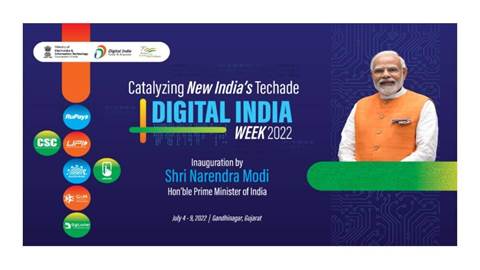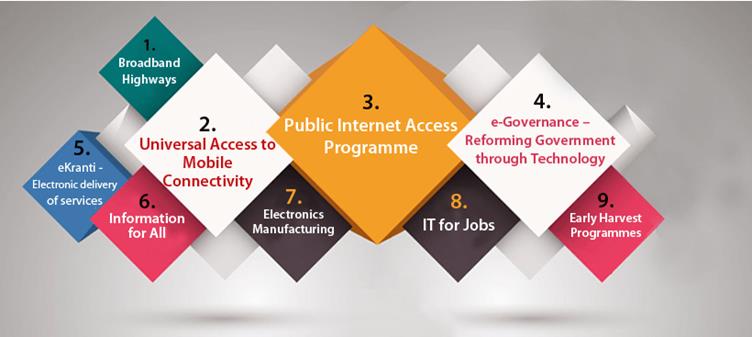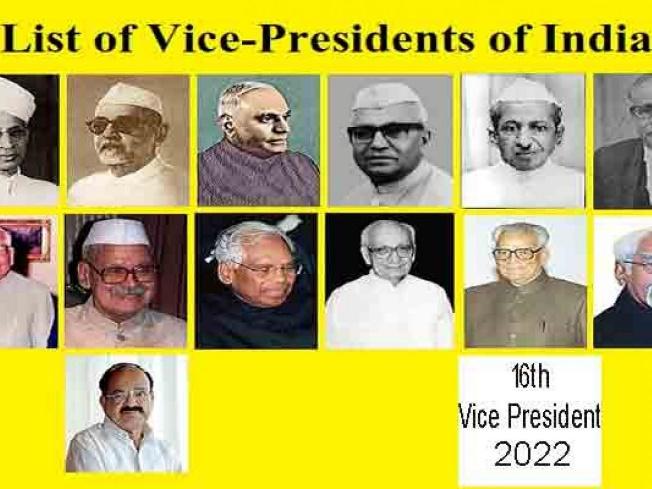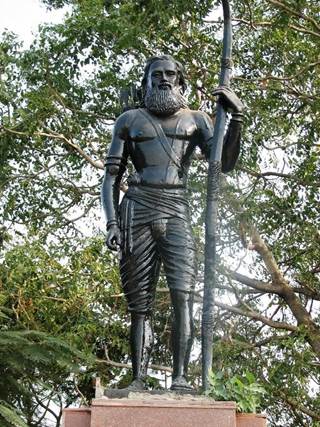AIR SPOTLIGHT
NIRYAT PORTAL: EXPORT PROMOTION

Disclaimer: Copyright infringement not intended.
Context
- Recently, Prime Minister Narendra Modi launched the NIRYAT portal, and PM also inaugurated the new premises of the Ministry of Commerce and Industry – ‘Vanijya Bhawan’ as a one-stop place for all information needed on India’s foreign trade.
About NIRYAT
- National Import-Export Record for Yearly Analysis of Trade (NIRYAT) portal and the newly inaugurated premises will help in breaking silos by providing real-time data to all stakeholders.
- The portal will reflect important information related to more than 30 commodity groups exported to more than 200 countries in the world will be available.
- In the coming time, information related to district-wise exports will also be available on this. This will also strengthen the efforts to develop the districts as important centres of exports.
- The NIRYAT portal also aimed to facilitate the further strengthening of India’s financial sector in line with the 3Ts of Trade, Tourism and Technology.
- The portal along with new premises (Vanijya Bhawan) will impact positively in the field of trade and commerce, especially MSMEs and will help achieve India’s aspirations of ‘Atmanirbhar Bharat’.
- The Vanijya Bhawan is constructed near India Gate and is designed as a smart building which incorporates the principles of sustainable architecture with a special focus on energy saving. It will serve as an integrated and modern office complex that will be used by the two Departments under the Ministry i.e., the Department of Commerce and the Department for Promotion of Industry and Internal Trade (DPIIT).
While launching the portal PM Modi called it a yearly analysis of national export and import record. One of the basic purposes of this portal is to do real-time monitoring of export but there are certain other benefits too.
What are the real features of the NIRYAT portal?
- Before this portal the target setting and monitoring during 2021-22 was done by the Department of Commerce. As was being held offline, the data was collected which then programmed, then was shared with territorial divisions & commodity divisions of the Department of Commerce which then was shared with their counterparts in other countries. Commodity divisions used to further share it with the Export Promotion Councils, commodity boards and other trade bodies.
- At present the data is being collected offline. This will give a big boost for the exporters as well as the international stakeholders.
- Real-time monitoring is the main purpose of launching this portal. Under this, the target monitoring will be done every month. One can know about the achievement of the monthly target and then it is divided into different cells based on country. Even the smallest country and 31 commodity group (quick estimate commodity) has been considered in terms of the spot or cell.
- Then it is being shared by the export monitoring desk of the Department of Commerce with all the territorial and commodity divisions which will further be shared with the respective countries and commodities.
- This sharing of data can only be conceptualised with real-time monitoring and this required digital portal. Hence the portal is going to serve that purpose.
The government has talked about the limited purpose of the portal but apart from direct benefits, there are several indirect benefits which are not mentioned on the dashboard or the face of the portal.
What are the indirect benefits of the portal?
- Experts have pointed out several indirect advantages. Among the first, once it will be login over to the portal the respective person or the ambassador with the login password will have direct access which would be customized according to the needs of that user.
- The user then will be able to see the data and the status of monthly export achievements of the last year with real-time monitoring.
- Hence the portal will help users to be less dependent on the territorial divisions of the Department of Commerce or the statistics advisor. But it will increase the interdependency and closeness of government departments which over time will help them understand the status and will make efforts accordingly in future.
- The entire government sector or various governmental departments will work closely but through independent access to data i.e., ease of access.
There was so much in consultations regarding the ease of access that there are several other platforms available where one can access data. NIRYAT portal is just one of the other platforms.
With the data on the NIRYAT portal, would it be an advantage to look for newer markets?
- Yes, with new commodities coming up from new markets, the research will help from real-time monitoring. However, it will have a limited purpose as it has monitored the export and import for the time being and not have the entire data. Those who looking can search over other platforms like data bank in Import-Export of Department of Commerce that is already in the public domain.
- The coverage is limited initially, but it will have many advantages in the coming time with the help of real-time monitoring and digitisation.
Target setting is one of the features of this initiative which is a complicated exercise. Even though the government was to simplify it.
What was the real exercise behind the target setting?
- The target setting was historic as it was not done in the past and hence is considered a difficult exercise.
- The 10 territorial divisions with 9 commodity divisions headed by a joint secretary adopted a bottom-up approach in setting the ambitious target of export and import.
- With such divisions it is the navigation that has made the accessibility of such data easy from a world perspective. Whereas, from India’s perspective government will develop district-wise data as the segregation is based on commodity wise.
With the help of this portal, one can formulate district-wise strategy, state-wise strategy, country-wise strategy and commodity-wise strategy.
With data being new fuel how can we use it to frame a strategy for export?
- At present only the state-level approach has been adopted. The district-wise strategy will be adopted in the coming time or as soon as the data is available to frame such a strategy.
- The government is majorly emphasising competitive federalism so the states like Gujarat and Maharashtra compete and it will ultimately benefit a country as a whole.
- With month-on-month data the strategy will be finalised with a bottom-up approach, which means the lower strata of the society will first be addressed and will pass on the fruit to the upper level.
At present, the government is focused on boosting exports. As per trends, the imports will also soon come into the limelight of government strategy because NIRYAT includes both export as well as import. Import or input monitoring is also important and it will be incorporated in due course. Will it have similar mechanisms like export or not will be clarified in the coming time.
The NIRYAT portal is an important step taken in the direction of the journey of Citizen-Centric Governance in New India. With an emphasis on local products by framing a district-wise strategy, the government aims to achieve its GDP $5 trillion goals.
https://newsonair.gov.in/Spotlight.aspx#
1.png)
https://t.me/+hJqMV1O0se03Njk9
Digital India Week

Disclaimer: Copyright infringement not intended.
Context
- Prime Minister Narendra Modi inaugurated the Digital India Week 2022 in Gandhinagar with the theme of ‘Catalysing New India’s Techade’.
- During the event the PM also launched multiple digital initiatives aimed at enhancing the accessibility of technology, streamlining service delivery to ensure ease of living and giving a boost to start-ups.
About Digital India
- Digital India is a flagship programme of the Government of India with a vision of transforming India into a digitally empowered society and knowledge economy.
- The programme management structure for Digital India consists of a Monitoring Committee on Digital India headed by the Prime Minister, a Digital India Advisory Group chaired by the Minister of Communications & IT and an Apex Committee chaired by the Cabinet Secretary.
- The central ministries/departments and state governments concerned would have the overall responsibility for the implementation of various Mission Mode and other projects under the Digital India Programme.
- The vision of the Digital India programme is to transform India into a digitally empowered society and knowledge economy. The Digital India programme is centred on three key vision areas.
- Digital Infrastructure as a Core Utility to Every Citizen
- Governance & Services on Demand
- Digital Empowerment of Citizens
- The pillars of digital India:

https://newsonair.gov.in/News?title=PM-Modi-inaugurates-Digital-India-Week-in-Gujarat%3b-Says%2c-India%e2%80%99s-FinTech-endeavour-is-truly-a-solution-by-the-people%2c-of-the-people%2c-and-for-the-people&id=443639
1.png)
https://t.me/+hJqMV1O0se03Njk9
Vice-President

Disclaimer: Copyright infringement not intended.
Context
- Election Commission (EC) has issued the notification for filing the nomination for the 16th Vice-Presidential election. Nominations can be filed till the 19th of July. Vice-Presidential Election will be held on the 6th of August.
About Vice-President
- The Vice-President occupies the second-highest office in the country. He is accorded a rank next to the President in the official warrant of precedence. This office is modelled on the lines of the American Vice-President.
- Vice-President election:
- The Vice-President, like the president, is elected not directly by the people but by the method of indirect election. He is elected by the members of an electoral college consisting of the members of both Houses of Parliament. Thus, this electoral college is different from the electoral college for the election of the President in the following two respects:
- It consists of both elected and nominated members of the Parliament (in the case of the president, only elected members).
- It does not include the members of the state legislative assemblies (in the case of the President, the elected members of the state legislative assemblies are included).
https://newsonair.gov.in/News?title=EC-issues-notification-for-filing-nomination-for-16th-Vice-Presidential-election&id=443635
1.png)
https://t.me/+hJqMV1O0se03Njk9
Neighbourhood First Policy

Disclaimer: Copyright infringement not intended.
Context
- The External Affairs Minister Dr S. Jaishankar while participating in a Discussion on Modi @ 20: Dreams Meet Delivery advocated India’s Neighbourhood First Policy under Prime Minister Narendra Modi.
About India’s Neighbourhood First Policy
- India’s Neighbourhood First Policy focus on improving relations with India’s immediate neighbours like; Bangladesh, Bhutan, Nepal, Sri Lanka, Myanmar, etc.
- India aspires to a peaceful, prosperous and stable neighbourhood to maintain the same in the South Asian region.
- SAARC satellite is one example of India’s dedication to peace and prosperity in the South Asian region.
https://newsonair.gov.in/News?title=PM-Modi-always-advocates-for-Neighbourhood-First-Policy%2c-says-EAM-S.-Jaishankar&id=443669
1.png)
https://t.me/+hJqMV1O0se03Njk9
One Nation, One Ration Card

Disclaimer: Copyright infringement not intended.
Context
- Consumer Affairs Minister Piyush Goyal while addressing the National Conference on Food and Nutrition Security in New Delhi said that the ‘One Nation, One Ration Card’ is a revolutionary step and unique initiative globally.
About One Nation, One Ration Card
- The Union Government launched the 'One Nation, One Ration Card' scheme on a pilot basis in four states in 2019. This scheme aims to ensure all beneficiaries, especially migrants get rations (wheat, rice and other food grains) across the nation from any Public Distribution System (PDS) shop of their own choice.
- With Assam becoming the last state to implement the one nation one ration card (ONORC) scheme, its pan-India rollout is now complete.
- It enables migrant ration-card-holders to lift their quota of grain entitlement from any fair price shop (FPS) in the country by using the ration card issued in their home states or Union Territory after biometric authentication on electronic Point of Sale (ePoS) devices installed at the FPS.
- Since the launch of ONORC, 710 million portable transactions – 436 million under National Food Security Act (NFSA) and 278 million under Pradhan Mantri Garib Kalyana Anna (PMGKAY) transactions have taken place under ONORC.
- A monthly average of about 30 million portable transactions are being recorded, delivering the subsidised NFSA and free PMGKAY foodgrains.
- As per estimates, 60 million people migrate seasonally to various states in search of livelihoods. Besides, around 80 million e people are intra-state migrants, moving from one district to another in their home state.
https://newsonair.gov.in/News?title=Migrant-workers-benefited-very-significantly-from-%26%2339%3bOne-Nation%2c-One-Ration-Card%26%2339%3b%3a-Union-Minister-Piyush-Goyal&id=443675
1.png)
https://t.me/+hJqMV1O0se03Njk9
Alluri Sitarama Raju

Disclaimer: Copyright infringement not intended.
Context
- Prime Minister Narendra Modi unveiled a bronze statue of freedom fighter Alluri Sitarama Raju, at a special programme on his 125th birth anniversary celebrations, at Bhimavaram in West Godavari District, Andhra Pradesh.
- As part of Azadi Ka Amrit Mahotsav, the Government is committed to giving due recognition to the contribution of freedom fighters and making people across the country aware of them.
About Alluri Sitarama Raju
- Born on 4th July 1897, Alluri Sitarama Raju is remembered for his fight against the British, to safeguard the interests of the tribal communities in the Eastern Ghats region.
- He had led the Rampa rebellion, which was launched in 1922.
- He is referred to as “Manyam Veerudu” (Hero of the Jungles) by the local people.
- The government has planned a series of initiatives as part of the year-long celebration.
- The birthplace of Alluri Sitarama Raju at Pandrangi in Vizianagaram district and Chintapalli Police Station (to mark 100 years of Rampa Rebellion - the attack on this police station marked the beginning of Rampa Rebellion) will be restored.
- The government has also approved the construction of Alluri Dhyana Mandir at Mogallu with a statue of Alluri Sitarama Raju in Dhyana Mudra, depicting the life story of the freedom fighter through mural paintings and an AI-enabled interactive system.
https://newsonair.gov.in/News?title=PM-unveils-bronze-statue-of-freedom-fighter-Alluri-Sitarama-Raju-on-his-125th-birth-anniversary-%3b-Says%2c-Tribal-art-%26-skills-getting-new-identity-through-Skill-India-Mission&id=443582
1.png)
https://t.me/+hJqMV1O0se03Njk9










